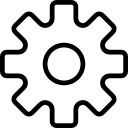






















Use the Multitenant feature of Oracle AI Database for it to function as a container database (CDB), thereby improving resource utilization, management, and overall security. Learn the benefits, configuration, and management of container and pluggable databases, including backup, security, and data migration using Oracle Database 23ai. With hands-on practices, you’ll be able to reinforce the learning of the new Oracle Multitenant feature and its capabilities.
1: CDB Basics
2: CDB and Regular PDBs
3: Application PDBs and Application Installation
4: PDB Creation
5: CDB and PDB Management
6: Storage
7: Security
8: Backup and Duplicate
9: Recovery and Flashback
10: Performance
11: Resource Allocation
12: Data Movement
13: Upgrade Methods